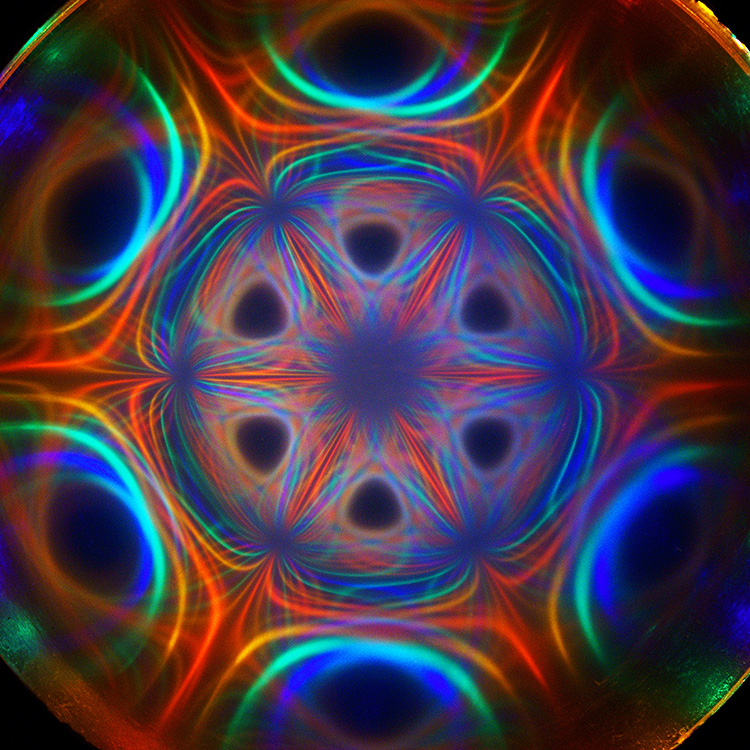 A luminous mandala obtained through the interaction of the magnetic field with a ferrocell.
A luminous mandala obtained through the interaction of the magnetic field with a ferrocell.
Fancy mandalas can be created from magneto-optical patterns in a ferrocell. The patterns arise from the scattering of light in a thin-film ferrofluid due to the formation of self-assembled nanoparticle structures controlled by an applied magnetic field.
In addition to interest related to the fundamental physics and aesthetic appeal of the ferrocell light pattern, devices based on disordered photonics of smart fluids also have potential application in optical switches, developing of new types of random lasers through the Anderson localization mechanism, simulating crown flashes observed in atmospheric optics, and controlling magnetic fields with light polarizers that can be used in solar panels.1
For these reasons, we investigated light scattering in a ferrocell subject to a magnetic field in the presence of different types of light sources and some aspects of light polarization in ferrofluids.2 For different orientations of the magnetic field with respect to light propagation, we observed different behaviors of light scattering, including Airy patterns related to the formation of the micro-needles and diffracted rays from a conical scattering due to oblique incidence of light in the ferrofluid. We also observed structures formed by nanoparticles with lengths on the order of hundreds of micrometers and diameters of a few micrometers that interact with an electromagnetic wave with wavelengths in the visible range.
As in the case of Gaussian surfaces that are used to explore the symmetries of a charge distribution to simplify the calculation of a field in electromagnetism, we explored the magnetic-field symmetries by choosing certain configurations of light sources to predict the pattern observed in the ferrocell. The light source was partially transformed to a luminous ring perpendicular to the applied magnetic field. We concluded that these luminous rings represent the horocycles of light, because the horocycle is a curve in hyperbolic geometry whose normal geodesics all converge asymptotically in the same direction.2
With this work, we have shown that a ferrocell can behave as a variable hyperbolic lens for certain configurations of the magnetic field, forming images similar to those observed in pseudosphere-shaped lenses.3
Researchers
Alberto Tufaile and Adriana Pedrosa Biscaia Tufaile, University of São Paulo, São Paulo, Brazil
Michael Snyder, Morehead State University, Morehead, KY, USA
References
1. A. Tufaile et al. Condens. Matter 5, 45 (2020).
2. A. Tufaile et al. Condens. Matter 6, 30 (2021).
3. A. Tufaile and A.P.B. Tufaile. 13th CHAOS 2020 Intl. Conf. Proc., no. 816 (October 2020).

